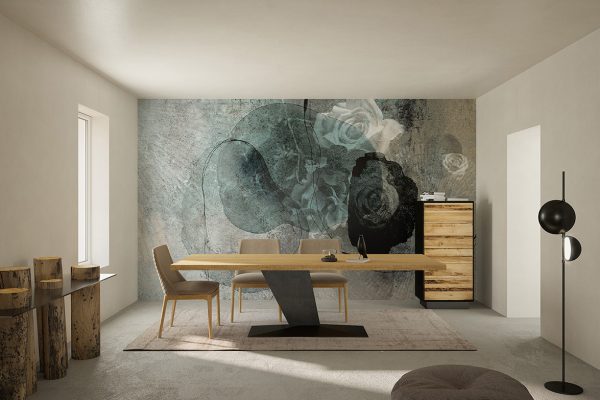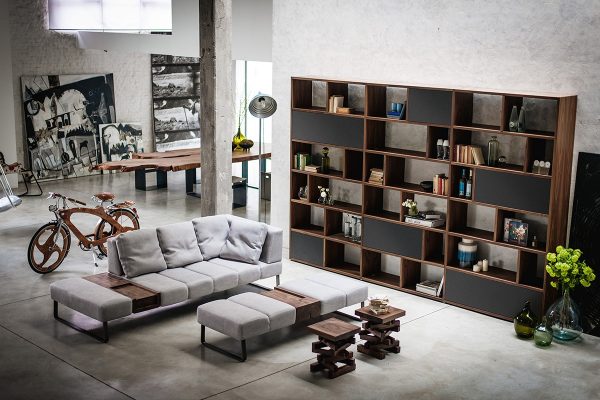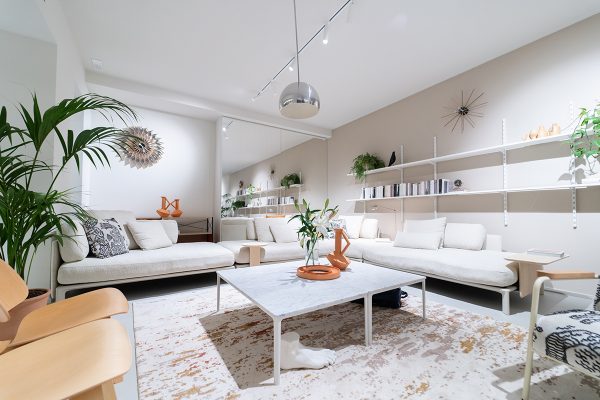Ludwig Mies van der Rohe undoubtedly finds a place among the most influential architects and designers of the 20th century, thanks to a minimalist approach and innovative vision that laid the foundation for modern architecture and its development over the years.
Mies van der Rohe’s works continue to influence the field of architecture and design to this day, as much for their aesthetics as for their functionality, a feature now inescapable in today’s furniture.
His design philosophy, aimed at exalting simplicity, transparency and the use of industrial materials, shaped modernism, giving rise to a new era in design and architecture.
In this article we will trace the history of Ludwig Mies van der Rohe, his most iconic works, such as the Barcelona Pavilion, and the influence his vision has had on contemporary design, where iconic pieces such as Knoll’s Barcelona armchair, sold by SAG’80, still play a starring role.
Mies van der Rohe: Pioneer of Modern Design
Born on March 27, 1886, in Aken, Germany, Ludwig Mies van der Rohe grew up in a cultural context that would play a crucial role in his rise, leading him to become one of the greatest pioneers of modern design.
Indeed, from a young age, Mies had the opportunity to approach the world of architecture, working with some of the best-known masters of the time, such as Peter Behrens. While his career began in an apprentice role, soon his talent and vision led him to be recognized without delay as an innovator.
Mies van der Rohe was a leading exponent of the Bauhaus movement, a school that encouraged functional and aesthetic design, characterized by a meeting of art and industry. His approach distanced itself from the decorative details of the past, placing the accent on the purity of geometric forms and the use of modern materials such as glass and steel. His vision of a simpler architecture, almost reduced to the essentials, became the basis on which modern design rests, profoundly influencing entire generations of architects and designers after him.
Mies’ guiding principle could be summed up by the motto “Less is more,” a philosophy that reflected a belief that beauty actually lies in simplicity.
This current of thought exerted a great influence on the design of buildings, but also in the field of interior design and furniture that entered the homes of so many people. His ability to design open, light-filled spaces capable of creating a strong link between interior and exterior was one of his most important innovations.
Innovations of Mies: Influence on SAG’80
The impact of Mies van der Rohe’s innovations was such that his principles were adopted by designers around the world and can still be clearly found today in much of the furniture of brands resold by SAG’80, such as Minotti, Cassina o B&B Italy.
The use of steel and glass, the use of straight lines and transparent surfaces, as well as the spasmodic focus on functionality, choosing each element for its practical purpose but without sacrificing formal elegance, have profoundly influenced modern design, particularly in the furniture industry.
Among all the furniture made by Mies, the famous Barcelona armchair now produced by Knoll, has set the minimalist design concept over time, enhancing the beauty of materials and simplicity of form in a way that has made the appeal of this unique piece capable of remaining relevant despite the passage of years.
Mies and Luxury Design: A Lasting Legacy.
Among the distinguishing features of Ludwig Mies van der Rohe’s works is undoubtedly the use of high-quality materials in the creation of furniture and spaces.
The simplicity that characterized his design philosophy did not deprive his works of elegance. On the contrary, it was precisely the choice of materials such as stainless steel, glass and marble that allowed Mies to impart a feeling of understated luxury to his creations, combining modernity with a sense of timeless sophistication to demonstrate how elegance was not necessarily synonymous with complexity.
The Ludwig Mies van der Rohe Pavilion in Barcelona., designed for the 1929 World’s Fair, has gone down in history as one of the best-known examples of this fusion of luxury and modernism.
The pavilion, with its steel and glass structure and marble floors, is a manifesto of Mies’s vision: an open space without visual boundaries, offering a sense of lightness and freedom. This project had an enormous impact on the development of modern architecture and continues to this day to be considered an icon of design.
In addition to the Barcelona Pavilion, other buildings such as the Villa Tugendhat in Brno reflected the architect’s belief that beauty derived from the simplicity and functionality of spaces, without any decorative excess, with an impact visible even today in luxury design.
Learn about Ludwig Mies van der Rohe’s legacy and how his architectural innovations continue to influence the design world with a clear imprint on luxury furniture and objects that are now considered symbols of high quality. Book a consultation in our showroom to transform your space with solutions inspired by the great master of design.



